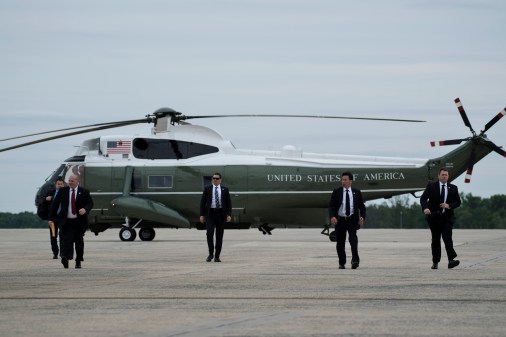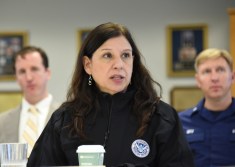The first iPhone didn’t come out until a year after Hurricane Katrina struck the Gulf Coast. At the time, Facebook and Twitter were in their infancy. Eight years later, the U.S. saw the unprecedented role social media played during Hurricane Sandy on the East Coast, when more than 20 million Sandy-related tweets were sent.
The House Subcommittee on Emergency Preparedness, Response and Communications held a hearing June 4 to further study the effect social media tools have on emergency preparedness, recovery and response, specifically during natural disasters, emergencies and terrorist attacks.
Google Vice President Matthew Stepka, Palantir Technologies’ philanthropy engineering team lead Jason Payne, President and CEO of the Internet Association Michael Beckerman, and Vice President of Public Service Enterprise Group, Inc. Jorge Cardenas made up the panel questioned by the committee.
“The management of big data and the use of social media provide enormous opportunities for efficiency in emergency management,” said Rep. Susan Brooks, R-Ind., subcommittee chairwoman.
In the aftermath of the earthquake in Haiti, people tweeted to the Red Cross requesting help and provided updates to the organization. Following the tornado devastation in Tuscaloosa, Ala., children tweeted they needed help picking up the damage at their school — and 80 volunteers showed up in 30 minutes.
During Hurricane Sandy, social media helped people connect and check in with their loved ones, identify evacuation routes, and provided shelter information for those whose homes were destroyed.
The panel and subcommittee discussed ways to improve strategy and implementation of social media in times of emergencies. Stepka supported the idea of crowdsourcing, which he defines as taking information from authoritative sources, such as FEMA, as well as collecting information directly from users.
“Crowdsourcing is an important thing to add to our crisis map; that information is necessary — sometimes authorities are not going to have all of the information,” he said. “It lets people on the ground participate in giving information, and makes it a crowd effort to give accurate information.”
For example, crowdsourcing was useful during Hurricane Sandy in locating working gas stations. Google used information from its users and put it on the website and map, which helped people find operational gas stations near them.
To Payne, it’s a matter of making sure all of this data is open. All the data generated by mobile devices was made available to relevant authorities to make sure they had access to all that information.
Improving public-private partnerships in regards to emergency responsiveness and recovery was highlighted in the FEMA 2013 emergency preparedness report released last week. FEMA has been working with various organizations to explore the possibilities of social media in disaster situations. Corporations such as Google have made key connections with organizations including the Red Cross, which have already revolutionized how relief organizations respond in emergency situations.
“I think the relationship highlights the importance of open data,” Payne said. “FEMA does a great job releasing certain data sources, so that organizations like Google and ourselves can use that information and leverage it. We would welcome the opportunity to see how we can improve that relationship.”
This hearing is evidence of the collaboration happening on a federal level between the government, relief organizations and the public. More than 60 percent of people in the United States use one form of social media — and many use more than one account. As recently as the tornado in Oklahoma, people were tweeting live updates, connecting with relief workers and helping people find shelter.
“There’s been a lot of progress to date; I’m very encouraged,” Stepka said. “They’re all steps in the right direction.”






